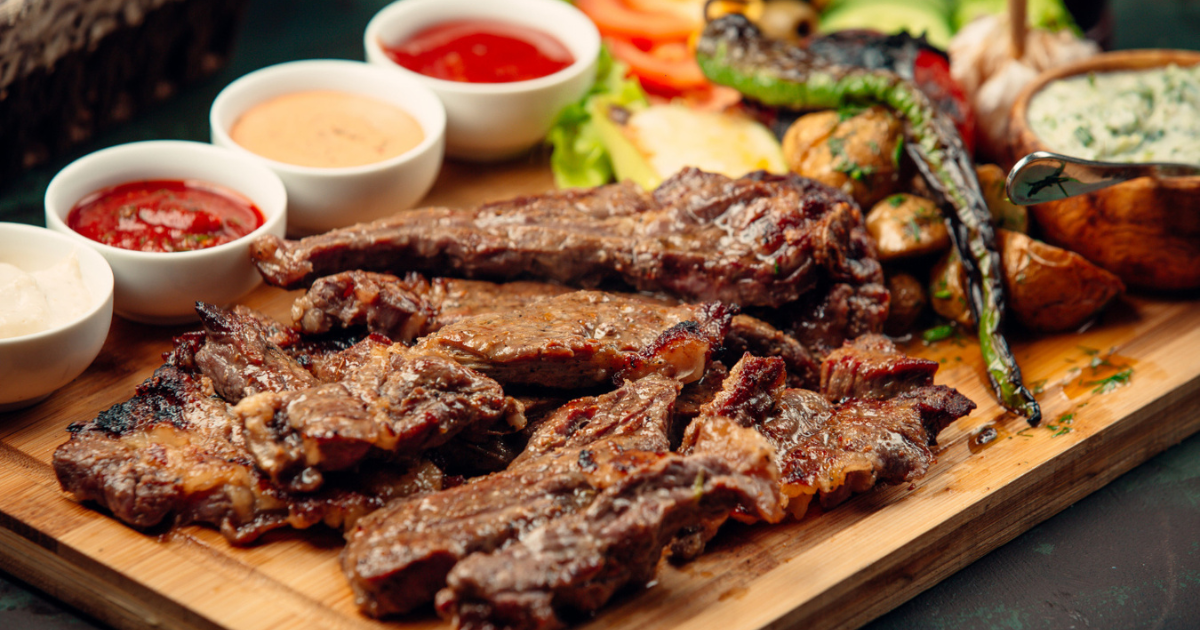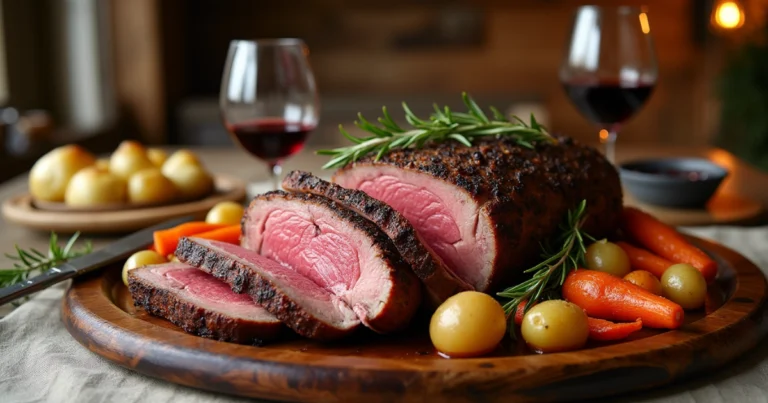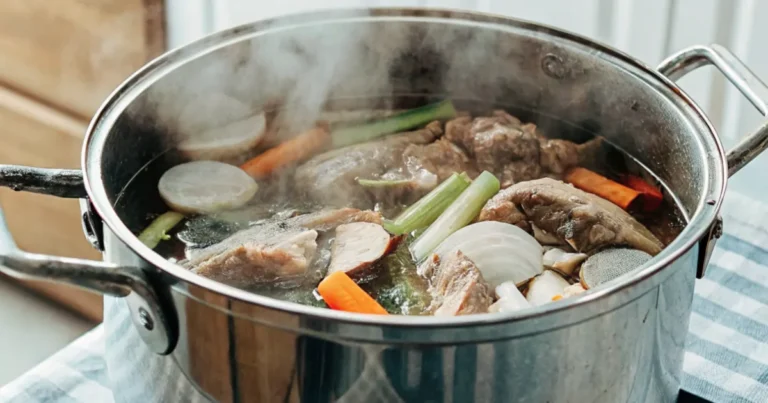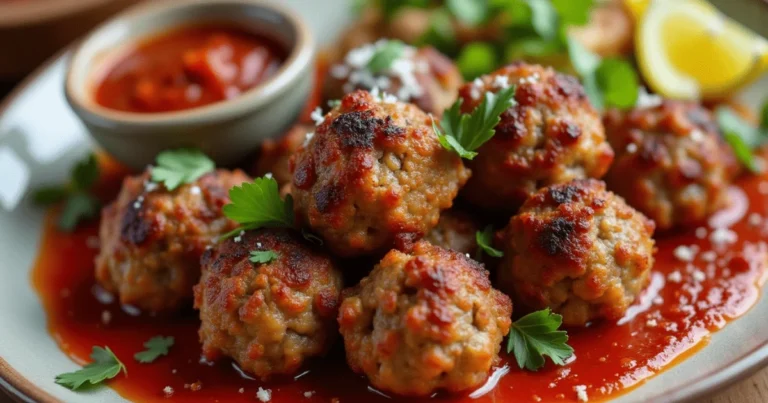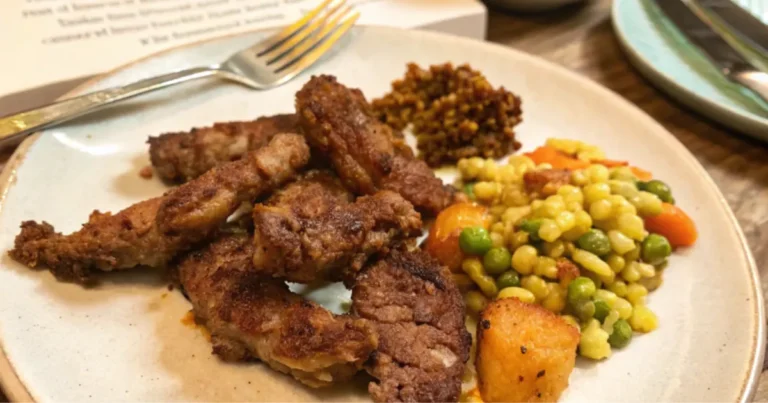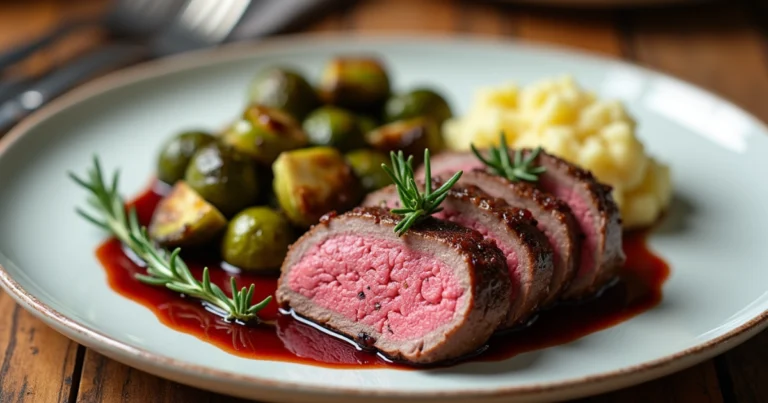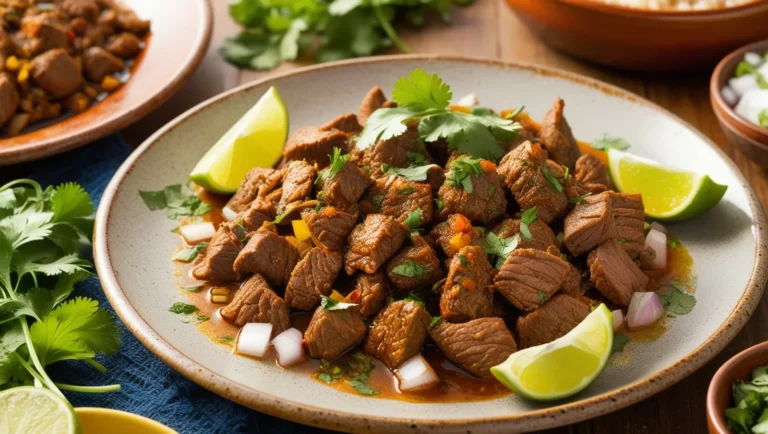deer roast recipe – step-by-step
When you think of a perfect meal that brings family and friends together, nothing quite compares to the rich, savory flavors of a deer roast. This culinary delight not only represents the essence of rustic cooking but also serves as a celebration of nature’s bounty. Whether you’ve been fortunate enough to hunt your own deer or have sourced venison from a local farm, this deer roast recipe is designed to be both accessible and unforgettable.
In this guide, you’ll discover the secrets to creating a mouthwatering deer roast, from preparation to serving. Let’s embark on this culinary journey together and turn a simple cut of meat into an exquisite feast.
Understanding the Basics of Deer Roast recipe
What is Venison?
Venison, or deer meat, is a lean protein that’s increasingly gaining popularity due to its distinct flavor and health benefits. It’s typically lower in fat than beef and higher in iron, making it a nutritious option for your meals. Understanding the qualities of venison will help you appreciate the taste and cooking techniques needed to create the perfect roast.
The Nutritional Benefits of Deer Meat
- Lean Protein:
- Venison is an excellent source of lean protein, essential for muscle repair and overall health.
- Low Fat Content:
- Compared to other red meats, venison has significantly less fat, making it a healthier choice.
- Rich in Nutrients:
- It provides essential nutrients such as iron, zinc, and B vitamins, contributing to your daily dietary needs.
Sourcing Quality Venison
When it comes to cooking with venison, sourcing high-quality meat is crucial. If you have the opportunity to hunt, nothing beats the experience of harvesting your own game. However, if hunting isn’t an option, look for reputable local farms that offer ethically raised deer. Always ensure that the meat is fresh and properly stored to guarantee the best flavor and quality in your dish.
Preparing Your Deer Roast recipe
Choosing the Right Cut
Not all cuts of deer are created equal, and selecting the right one for roasting can make a world of difference in taste and texture. Here’s a quick guide to some of the best cuts for roasting:
| Cut | Description | Ideal Cooking Time |
|---|---|---|
| Hindquarter | Rich, flavorful meat; great for roasting | 1.5 – 2 hours |
| Shoulder | Tender and juicy, perfect for slow roasting | 2 – 3 hours |
| Loin | Extremely tender; cooks quickly | 1 – 1.5 hours |
Essential Tools and Equipment
Before diving into the recipe, gather the necessary tools to ensure a smooth cooking process. Here’s a checklist:
- Sharp knife for trimming and cutting
- Roasting pan or Dutch oven
- Meat thermometer to check doneness
- Cutting board
- Mixing bowl for marinades
Marinating and Seasoning
Marinating your deer roast not only enhances its flavor but also helps tenderize the meat. Here are a few ideas for marinades and seasoning blends:
- Classic Marinade:
- Olive oil
- Red wine or balsamic vinegar
- Garlic
- Rosemary, thyme, and black pepper
- Spice Blend:
- Salt
- Pepper
- Paprika
- Onion powder
- Garlic powder
Step-by-Step Deer Roast Recipe
Now that you’re equipped with the knowledge and tools, let’s get into the heart of the article—the recipe itself!
Ingredients Table
| Ingredient | Quantity |
|---|---|
| Venison roast | 3-4 pounds |
| Olive oil | 2 tablespoons |
| Red wine | 1 cup |
| Garlic | 4 cloves, minced |
| Fresh rosemary | 2 sprigs |
| Fresh thyme | 2 sprigs |
| Salt | To taste |
| Black pepper | To taste |
Preparation Steps
- Trim the Roast:
- Start by trimming any excess fat from the venison roast. This helps prevent the meat from becoming greasy during cooking.
- Marinate the Meat:
- In a mixing bowl, combine olive oil, red wine, garlic, rosemary, thyme, salt, and pepper.
- Place the roast in a resealable bag or shallow dish, pour the marinade over it, and seal it. Let it marinate in the refrigerator for at least 4 hours or overnight for optimal flavor.
- Preheat the Oven:
- Preheat your oven to 325°F (160°C) while you prepare the roast for cooking.
Cooking Instructions
- Remove the Roast from the Marinade:
- Take the venison roast out of the marinade and let it sit at room temperature for about 30 minutes before cooking.
- Sear the Meat:
- In a hot skillet, add a little olive oil and sear the roast on all sides until it’s nicely browned (about 3-4 minutes per side).
- Roast in the Oven:
- Transfer the roast to a roasting pan or Dutch oven, and pour the remaining marinade over it.
- Insert a meat thermometer into the thickest part of the roast.
- Roast in the preheated oven until the internal temperature reaches 130°F (54°C) for medium-rare or 145°F (63°C) for medium, usually taking 1.5 to 2 hours depending on the size of the roast.
- Rest the Roast:
- Once done, remove the roast from the oven and cover it loosely with aluminum foil. Let it rest for 15-20 minutes before slicing. This allows the juices to redistribute, making for a juicier roast.
Serving Suggestions for Deer Roast recipe
Now that your deer roast is perfectly cooked and rested, it’s time to serve. Here are some delightful sides that pair well with the rich flavors of venison:
Ideal Side Dishes
- Roasted Root Vegetables: Carrots, parsnips, and sweet potatoes roasted with herbs bring a natural sweetness that balances the savory roast.
- Wild Rice Pilaf: The nutty flavor of wild rice complements the earthiness of the venison.
- Seasonal Greens: Lightly sautéed kale or spinach with garlic adds a vibrant color and nutrition to your plate.
Presentation Tips
- Serving Platter: Arrange slices of deer roast on a rustic wooden board or a large platter. Garnish with fresh herbs for an appealing look.
- Sauces and Gravies: Consider serving a red wine reduction or a savory gravy made from the drippings for an extra layer of flavor.
Storing and Reheating Leftover Deer Roast
One of the best parts of cooking a deer roast is enjoying leftovers! Here’s how to store and use them effectively.
Best Practices for Storing Leftovers
- Cool Before Storing: Allow the roast to cool to room temperature before refrigerating.
- Use Airtight Containers: Store the leftover roast in airtight containers to keep it fresh. It can be refrigerated for up to 3 days or frozen for up to 6 months.
Creative Ways to Use Leftovers
- Deer Roast Sandwiches: Thinly slice the leftover roast and layer it with your favorite toppings for a hearty sandwich.
- Venison Stew: Chop the remaining meat and add it to a pot with vegetables and broth for a delicious stew.
Reheating Methods
- Oven: Preheat the oven to 250°F (120°C). Wrap the roast in foil and heat until warmed through.
- Microwave: Use a microwave-safe dish and heat in short intervals, stirring occasionally to ensure even warming.
- Stovetop: Sauté in a skillet with a little broth or oil over medium heat until heated through.
Frequently Asked Questions about Deer Roast Recipe
What is the best cut of deer for roasting?
The hindquarter and shoulder are excellent choices for roasting due to their rich flavors and tenderness. The loin is also a top option if you prefer a quicker cooking time.
How do I know when my deer roast is done?
The best way to check doneness is with a meat thermometer. Aim for 130°F (54°C) for medium-rare or 145°F (63°C) for medium.
Can I use this recipe for other game meats?
Absolutely! This recipe can be adapted for other game meats like elk or antelope. Just adjust the cooking time based on the cut.
How should I store leftover deer roast?
Cool the roast to room temperature, then store it in an airtight container. It will keep in the refrigerator for up to 3 days or can be frozen for longer storage.
Cooking a deer roast is more than just preparing a meal; it’s an experience that connects you with nature and brings your loved ones together. As you gather around the table to enjoy the fruits of your labor, you’ll create cherished memories that last a lifetime.
Now that you’ve mastered this deer roast recipe, why not share your cooking experience? Comment below with your thoughts, tips, or variations you’ve tried! Don’t forget to share this recipe with friends and family who might also appreciate the joys of venison. Happy cooking!

